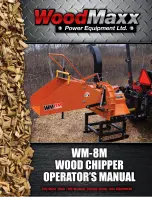
61
#3 Water Flush
This procedure can be used when the only
material to cause the coil to need cleaning is
debris from plant material that has impinged
the coil face.
1.
Rinse the coil completely with water. Use
a hard spray but be careful not to bend or
damage the fins. A spray that is too hard
will bend the fins. Spray from the fan side
of the coil.
2.
Spray and rinse the coil from the face.
Application Examples
The three procedures can be used to clean
microchannel coils. They will fit with the
application depending on the area. In some
areas where the spring/summer has a large
cottonwood bloom #3 might work fine if the
unit is installed on an office building and no
other environmental factors apply.
When a unit is installed where the sprinkler
system has water being sprayed onto the
condenser coil you might have better results
using #2. Vinegar is slightly acidic and may
help with the calcium build up from drying
water. This also works well when grease is
part of the inlet air to a condenser coil.
Generally the best and broadest based
procedure is #1. The grease cutting effect of
the Simple Green is good for restaurant
applications.
Other Coil Cleaners
There are many cleaners on the market for
condenser coils. Before using any cleaner
that is not covered in this section you must
get written approval from the AAON
warranty and service department. Use of
unapproved
chemicals
will
void
the
warranty.
AAON testing has determined that unless a
chemical has a neutral pH (6-8) it should not
be used.
Beware of any product that claims to be a
foaming cleaner. The foam that is generated
is caused by a chemical reaction to the
aluminum fin material on tube and fin coils
and with the fin, tube, and coating material on
microchannel coils.
Microchannel coils are robust in many ways,
but like any component they must be treated
correctly. This includes cleaning the coils
correctly to give optimal performance over
many years.
Evaporative-Condensed Chiller
Evaporative cooling equipment rejects heat
by evaporating a portion of the recirculated
water spray and discharging it from the unit
with the hot, saturated air. As the spray water
evaporates, it leaves behind the mineral
content and impurities of the supply water. If
these residuals are not purged from the water
distribution system, they will become
concentrated and lead to scaling, corrosion,
sludge build-up and biological fouling.
A water treatment monitoring and control
system has been furnished with this unit. Be
sure to read the complete manual that has
been furnished. All water treatment is a
combination of bleed water and chemical
treatment for proper control of the residuals
and to prevent any biological contamination.
Use pressurized clean water, with
pressure not to exceed 140 psi.
Nozzle should be 6” and 80° to 90°
from coil face. Failure to do so could
result in coil damage.
CAUTION
Summary of Contents for LZ Series
Page 2: ......
Page 27: ...27 Figure 6 Concrete Pad Mounting with Dimensions Figure 7 LZ Base ...
Page 36: ...36 Figure 17 Typical Flue Vent Piping ...
Page 83: ...83 ...
Page 84: ...84 ...
Page 95: ...95 Flo Trex Cross Section ...
















































